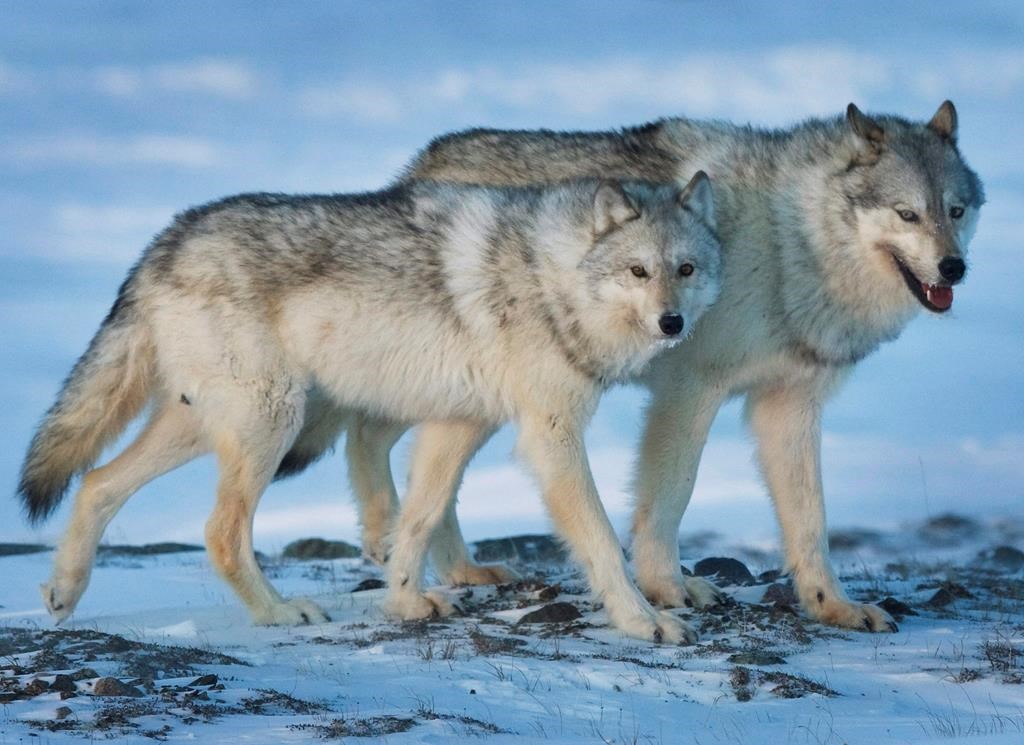Animal advocates have asked the federal health minister to review a decision that allows Alberta to keep using strychnine to poison wolves in an ongoing effort to preserve caribou herds.

Wolf Awareness and Animal Justice filed the request with Health Canada earlier this week, along with accusations that Alberta is breaking the terms governing use of the toxin and endangering other wildlife.
“These products are not environmentally responsible,” said Kaitlyn Mitchell, a lawyer with Animal Justice. “The evidence of non-compliance with legal restrictions further underscores the point we can’t be using these in Canada in a responsible way.”
Alberta officials deny misusing strychnine and say its use is essential to keep caribou on the landscape.
Last March, Health Canada’s Pest Management Regulatory Agency renewed permission for Alberta to keep placing strychnine-laced bait in caribou habitat to reduce the number of wolves that prey on the endangered herds. Between 2005 and 2018, Alberta killed 225 wolves with strychnine in addition to deaths from aerial gunning.
Legislation allows for a review by the minister in light of new evidence. Animal Justice and Wolf Awareness say documents obtained under freedom of information provide that evidence.
Conditions stipulate that bait sites must be checked every seven days to ensure carcasses don’t poison other animals and the toxin doesn’t enter the environment. Records show that in 2018, the average time between checks at 19 sites was nearly nine days, including one stretch of two weeks.

The request also alleges that Alberta is leaving out more poison than the 12 baits per site the rules allow. It quotes government records saying 20 baits were left out at almost all the sites.
The request adds that site inspections and cleanup _ important to ensure strychnine is removed from the landscape _ were also inadequate.

Get daily National news
“More than 20 per cent of strychnine bait sites were not able to be inspected, either adequately or at all, for up to three months after sites were deemed closed due to local flooding,” the request says.
Health Canada has not said whether it will grant the review request.
Dave Hervieux, a longtime caribou expert with Alberta Environment, said bait sites are often tough to reach in winter when the strychnine is placed.
“Seven days is what we strive to achieve. In the vast majority of (cases), we do achieve that. I don’t know what the negative implications would be of missing the seven days by a day or two.”
Hervieux said poison is the only option for wolf control at the remote sites, which are only accessible by air. He also doubted Alberta Environment is setting out too much poison.
“I don’t think that’s factual,” he said.
Hervieux acknowledges more non-wolves than wolves are killed by strychnine, a poison widely banned around the world and considered by veterinarians to deliver an excruciatingly painful death.
But there’s little choice on a landscape where caribou habitat has been heavily disturbed by decades of logging and oil and gas activity, he said. Habitat restoration takes time, he said, and caribou need help now.
“We are trying to avoid the extirpation of an iconic species _ caribou _ that is in trouble entirely because of our activities,” Hervieux said.
“I get it that it’s not OK to kill a dozen ravens. But the real question is shall we try to make this situation right, protect these animals _ caribou _ so that they can exist and benefit from improved habitat conditions into the future, or shall we not?”



Comments